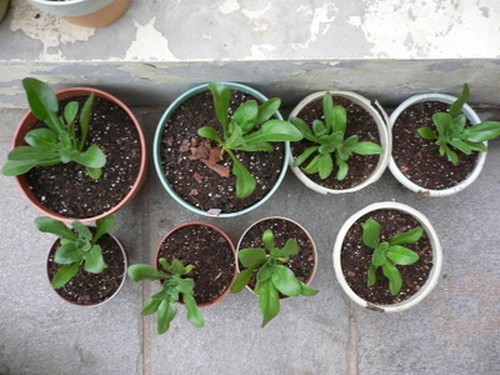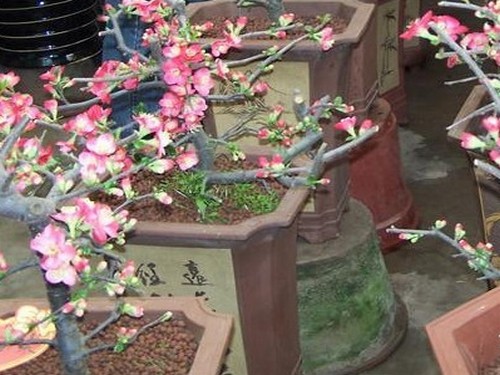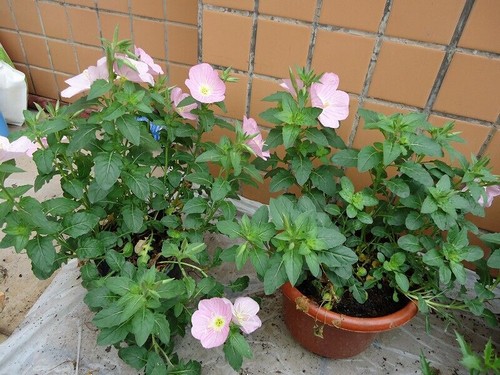Propagation methods of Calendula
Calendula has strong resistance to sulfur dioxide and certain resistance to cyanide and hydrogen sulfide. It is an excellent anti-pollution flower and the main material of spring flower bed. It can be used as cut flowers and potted plants. Suitable for the central square, flower beds, flower belt layout, can also be used as lawn edge flowers or potted ornamental. Varieties with long stalks and large flowers can be used to cut flowers.

The method of reproduction is mainly sowing and reproduction, and it can also reproduce by self-sowing. Sowing and propagation, often sowing in autumn (mid-late September) or in early spring in greenhouse, the optimum temperature for germination is 20: 22 ℃, and covered with a thin layer of soil after sowing, it can germinate in about 7-10 days. When the seedlings grow 3-4 true leaves, the seedlings are transferred for the first time, and then planted in flowerpots of appropriate size after 5-6 true leaves. If you encounter a cold wave when sowing in autumn, you can wrap the flowerpot with plastic film to keep warm and moisturize.
Calendar chrysanthemum has 100-125 seeds per gram, and the optimum temperature for germination is 20-22 ℃. The soil of pot sowing needs to be sterilized. After sowing, the soil is covered with 3 mm and germinates in about 7-10 days. The germination rate of seeds is 80%-85%. Irrigate thoroughly, wait for the water to seep down and cover the soil about 1 cm, maintain good sunlight, the topsoil should not be dry before the seedlings are unearthed, and can be sprayed to keep moist.
After emergence, keep good ventilation and light, and control the watering times, dry and thoroughly.
Autumn sowing is often carried out after mid-late September: Matrix disinfection to disinfect the substrate used for sowing, the best way is to put it into the pan to fry hot, any diseases and insects can be scalded to death.
For tiny seeds that are difficult to pick up with hands or other tools, wet one end of the toothpick with water, stick the seeds one by one on the surface of the matrix, cover the matrix 1 cm thick, and then put the seeding flowerpot into the water. the depth of the water is 1 inch 2pm 3 of the height of the flowerpot, allowing the water to soak up slowly (this method is called "pot immersion").
Sprouting: soak the seeds in warm hot water (the temperature is about the same as facial wash) for 3 to 10 hours until the seeds absorb water and expand. For common seeds that germinate easily, this work does not have to be done.
In addition, calendula can also be propagated by cuttings.
Cutting substrate: is used for cutting nutrient soil or river sand, peat soil and other materials. Due to the limited conditions, it is difficult to get an ideal cutting substrate, so it is recommended to use the prepared and sterilized cutting substrate provided by this station; medium and coarse river sand is also fine, but rinse with clean water several times before use. Do not use sea sand and river sand in saline-alkali areas, they are not suitable for the growth of flowers and plants.
Selection of cutting branches: the branches used for cutting are called cuttings. Usually combined with the heart-picking work, the sturdy, disease-free top tip is taken as a cuttage, and the top tip is cut directly.
Time: 2019-06-11 Click:
- Prev

Cutting technique of Prunus mume
Prunus mandshurica is an important early spring flowering tree species in gardens in North China. Although it is strong in nature and easy to cultivate, its management in spring can not be relaxed. If we do not pay attention to the management in spring, it will result in neither luxuriant trees nor numerous flowers, which will affect the ornamental effect. Elm leaf plum has been cultivated in China for hundreds of years.
- Next

Sowing and Propagation techniques of Evening Primrose
Evening primrose is also known as evening primrose. Evening primrose flowers bloom slowly in the evening and wither at dawn. The flowers bloom for only one night, and it is said that their blossoms are specially for the moon to appreciate, hence the name of evening primrose. Evening primrose, like epiphyllum, blossoms at night, hence the name night incense, pleasant aroma, suitable for decorating the night scene
Related
- Fuxing push coffee new agricultural production and marketing class: lack of small-scale processing plants
- Jujube rice field leisure farm deep ploughing Yilan for five years to create a space for organic food and play
- Nongyu Farm-A trial of organic papaya for brave women with advanced technology
- Four points for attention in the prevention and control of diseases and insect pests of edible fungi
- How to add nutrient solution to Edible Fungi
- Is there any good way to control edible fungus mites?
- Open Inoculation Technology of Edible Fungi
- Is there any clever way to use fertilizer for edible fungus in winter?
- What agents are used to kill the pathogens of edible fungi in the mushroom shed?
- Rapid drying of Edible Fungi

